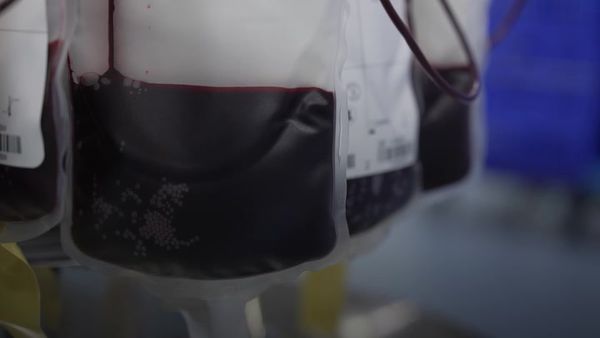A trio of sculptures costing £26,000 which residents have likened to elephant poo have been defended by the council that installed them. The "organic shapes" were installed as part of a new housing development.
They are meant to evoke the tides, with weathered bricks suggesting erosion and metal hoops tide lines. But reaction amongst the public has been mixed, with some commenters saying they resemble another kind of organic substance. The sculpture were installed outside Portslade Town Hall as part of Brighton and Hove City Council's new Victoria Road housing development.
One commenter said: "Looks like a giant elephant had made a visit."
Another said: "What an incredible waste of taxpayers’ money, and what an insult to local residents. These look like enormous lumps of dog excrement."
A council spokesperson said: "We are aware that public art installations can sometimes divide local opinion. But the most important thing is that our award-winning Victoria Road development has created really high quality new homes for around 40 families in need.
"There is a national shortage of affordable accommodation and we believe most residents will be delighted that we are taking such positive steps to address this problem locally. As part of our planning processes we ask all developers to make a public art contribution. In this instance the developer was the council.
"We can’t simply pick and choose which parts of the planning process we comply with. The total cost of £26,000 was only slightly over the minimum £25,000 allowed."
The sculptures were designed by artist Felicity Hammond and developed with architecture and ideas studio CAN.
A press release announcing the installation said: "Hammond and CAN have produced a cluster of three organic forms appearing as weathered sections of brickwork, washed up and castaway by the sea. The forms are made from cement mixed with an aggregate of waste bricks leftover from the construction of the new housing.
"Sited in the central civic space of the development, fragments of brick are revealed on the polished surface of the sculptures, mimicking the way that the tide erodes and smoothes industrial materials. The history of the site and its coastal location are embedded in the processes used to make the artwork, which references the local former brickfield and the polishing company that once occupied the adjacent town hall.
"The polished brick forms in place are a series of steel hoops, which at once blend into the aesthetic of municipal design yet also stand out, like a warning or a marker. The painted steel mimics the change in texture on the concrete forms, suggesting a rising tidal line; a hint at the challenges faced by coastal towns. Through this gesture, Forecast responds to the very nature of permanence in relation to public art, asking its audience not only to consider the material histories related to the site, but also its future form."
Meanwhile, the housing development itself has won an award for energy efficiency at the first national Unlock Net Zero Awards. Victoria Road is one of the largest schemes completed so far in the city’s New Homes for Neighbourhoods programme, building much-needed homes for rent on council-owned land. Its 42 homes are a mix of one, two and three bedroom flats in two buildings, Jay Court and Perching Court.
Councillor Gill Williams, deputy leader and chair of the Housing and New Homes Committee, said: "Victoria Road marks a milestone on the way to achieving the city’s net zero ambition. The sustainability features on the new homes will reduce carbon emissions as well as helping residents manage their energy bills. This is the future of social housing."
It’s the first time the council has used a ground source heat pump system in a new council housing scheme in the city to supply heating and hot water for the homes, which are also highly insulated. Extra support is being given to tenants to help them run the system efficiently and minimise energy bills.
Electricity generated from 168 solar panels will power communal services, including lighting and power in communal ways and external lighting. They are designed to provide 63,500kW, saving 14.09 tonnes of carbon. The scheme has planted ‘living’ walls, bat boxes, and bird and bee bricks to encourage biodiversity, and a communal garden for residents which includes fruit trees and a wildflower lawn area.







